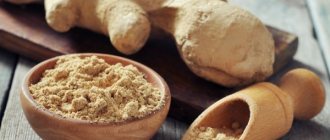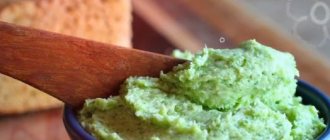Hypertensive patients are dependent on blood pressure-lowering medications. But this dependence on medicines, on the one hand, is expressed by significant costs, which in times of economic crisis become too burdensome for the family budget, and on the other hand, stress for the whole body, because any pharmaceutical drug is a chemical, a source of toxins and harmful substances.
Another thing is traditional medicine. Unique recipes, collected over centuries, based on the gifts of nature, open doors for people to the world of health and longevity, giving an excellent opportunity to get rid of this or that ailment without harm or expense.
In this article we will talk about berries, in particular, we will find out: do lingonberries increase or decrease blood pressure?
Medicinal properties of lingonberries - main characteristics
The medicinal properties of lingonberries are due to the rich content of vitamins and minerals in the berries and leaf plates, which are used to prepare medicines. The presence of vitamin C helps strengthen the immune system and prevents infection with viral diseases during the winter. Magnesium, zinc and calcium strengthen the nervous system and bone tissue.
Important! The high iron content in lingonberry berries helps increase hemoglobin levels in the blood and prevents anemia.
The presence of benzoic acid has an antiseptic effect and will help reduce fever during colds. Thanks to the presence of phytoncides, vitamins A and E, the skin becomes firm and elastic. This composition has a rejuvenating effect, so lingonberries are often used as the main or auxiliary component in face masks.
Yagod
Depending on the variety, lingonberries ripen from early August to early September. The fruits are spherical in shape and bright red in color. The berries can reach up to 8 mm in diameter and weigh up to 10 g.
| Microelements | Vitamin composition |
| Iron | A nicotinic acid |
| Manganese | Beta carotene |
| Magnesium | Tocopherol |
| Zinc | Thiamine |
| Potassium | Riboflavin |
| Phosphorus | Folic acid |
| Sodium | Ascorbic acid |
Chemical properties per 100 g of product:
- calories - 47 kcal;
- proteins - 0.7 g;
- fats - 0.4 g;
- carbohydrates - 8.2 g.
You will be interested to know how to make lingonberry liqueur.
Leaves and branches
Lingonberry bush is an evergreen crop belonging to the Heather family. The plant reaches a height of only 30 cm. Its leaf blades are up to 3 cm long and 1.5 cm wide. The shape is obovate or oval with a pointed end and inwardly curved edges. The upper part of the leaf is dark green, the reverse side is light, matte in color. The stems of the plant are thin, light green.
| Content of vitamins and organic acids | Nutrient balance |
| Thiamine | Manganese |
| Riboflavin | Magnesium |
| Pantothenic acid | Calcium |
| Pyridoxine | Potassium |
| Folic acid | Chromium |
| Cyanocobalamin | Zinc |
| Retinol | — |
| Tocopherol | — |
| Ascorbic acid | — |
| Organic acids | — |
| Benzoic acid | — |
| Kholin | — |
| Phytoncides | — |
Chemical composition of leaves and branches per 100 g:
- calories - 46 kcal;
- proteins - 0.7 g;
- fats - 0.5 g;
- carbohydrates - 8.5 g.
Did you know? Attempts to cultivate lingonberries in Russia were made back in the 18th century, but they were not successful, and only in the 60s of the 20th century botanists managed to grow this variety.
Healing composition
The uniqueness of the plant lies in the fact that all above-ground parts of this small shrub have medicinal properties: stem, leaves, berries. Their composition is a rich set of useful substances:
- numerous macro- and microelements, vitamins A, B, C, D, E, antioxidants, fatty acids, essential Omega-3;
- the mineral complex includes the elements of calcium, zinc, potassium, phosphorus, magnesium, as well as manganese and iron;
- natural sucrose, berry fructose, dietary fiber.
Complementing each other, all these components represent an exceptional system for the treatment of numerous diseases, in particular hypertension. A basket of red berries can replace a package of expensive multivitamins and minerals.
Attention! Recently, biologists conducted studies on the basis of which the conclusion was made: the systematic consumption of lingonberry bush fruits leads to the normalization of high blood pressure.
The benefits and harms of lingonberries
- Benefits of lingonberries for the body:
- decreased blood pressure;
- antipyretic effect;
- anti-inflammatory and antifungal effect;
- astringent effect;
- improving the condition of the skin;
- regulation of metabolic processes in the body;
- regulation of vitamin and mineral balance during colds.
- Possible harm from taking lingonberry-based products:
- excessive decrease in pressure (with hypotension);
- increased acidity;
- heartburn and nausea;
- allergy;
- headache.
The effect of lingonberries on the functioning of the cardiovascular system
The use of folk remedies to prevent the development of cardiovascular diseases is used along with medications. The beneficial effect of lingonberries on strengthening the walls of blood vessels, as well as preventing blood liquefaction and the formation of blood clots, has long been proven.
For blood pressure
The fruits contain salicylic acid, which in moderate quantities thins the blood, and also, in cooperation with other vitamins included in the product, helps eliminate cholesterol and toxins.
Also read about how raspberries, ginger and dill affect blood pressure.
Thanks to blood thinning, it is possible to lower the pressure inside the vessels, which leads to an improvement in the general condition of the body and eliminates: migraines, nausea and weakness that accompany the disease.
On vessels
Potassium, which is part of lingonberries, helps strengthen the walls of blood vessels and normalizes the functioning of the myocardium. The fiber contained in the fruit helps cleanse the capillaries of toxins. The use of lingonberry-based decoctions prevents the formation of blood clots, thereby preventing the development of cardiovascular pathologies.
Berries that lower blood pressure
So, which berries lower blood pressure? The answer to this question should be sought in the recesses of nature, in the depths of centuries. Since ancient times, it was believed that berries with a high degree of acidity reduce blood pressure.
For this purpose, infusions and decoctions of rose hips, raspberries, cranberries, and black currants were used for medicinal purposes. But nature is generous with gifts, rich in types of berries. Hawthorn, bilberry, blueberry, chokeberry, sea buckthorn... they are all also mentioned in many recipes for blood pressure.
But the question immediately arises: does the same blueberry or sea buckthorn increase or decrease blood pressure? Here the answer is ambiguous - the effect of the plant depends on whether the berries themselves or its leaves are used for medicinal purposes. Thus, sea buckthorn leaves have the property of sharply lowering blood pressure, and the pulp is no longer known to have such a pronounced effect, so its use in small quantities is also acceptable for hypotensive patients.
Another thing is the lingonberry. The substances included in its chemical composition can be a good analogue of pharmaceutical medications that are indicated for hypertension.
Regulating blood pressure with lingonberries for hypertension
With varying degrees of hypertension, blood pressure surges can be regulated with the help of lingonberry fruits and leaves. It is better to use traditional medicine after consultation with a doctor, who will tell you whether this remedy is compatible with pharmaceutical medications and will be able to voice the benefits or harms of this technique.
1-2 degrees
Arterial hypertension of the 1st degree is a mild form of the disease. Pressure surges are periodic; the upper blood pressure reading ranges from 140 to 159 mm. rt. Art., the lower mark shows 90–99 mm. rt. Art. The attacks pass without complications or consequences. During the period of remission of the disease, the patient's blood pressure is normal. Hypertension of the 2nd degree manifests itself in an increase in pressure to 179 mm. rt. Art. in the upper range and up to 109 in the lower range. At this stage of the disease, periods of exacerbation of the disease are longer and the pressure rarely returns to normal.
Did you know? The lingonberry bush is a long-lived plant, because its age can reach 300 years.
At both stages, it is important to observe with a therapist and prescribe adequate treatment, because hypertension slowly leads to: atherosclerosis, vascular thrombosis, aortic aneurysm. Blood pressure regulation with lingonberry berries should be used along with drug treatment. During the period of exacerbation of the disease, you can eat 50 g of lingonberries for 7–10 days. This treatment will help get rid of headaches and normalize your heart rate, which is very important when you have hypertension.
If you periodically (every 2-3 months) repeat the course of treatment with a folk remedy, you can get rid of insomnia and avoid pressure surges in grade 1 hypertension. A decoction made from a dry collection of leaves and branches of a bush is used during an exacerbation of the disease to slowly and gradually reduce blood pressure. A concentrated decoction of: 40 g of the collection and 400 ml of water is drunk on an empty stomach, 50 g each in the morning. The course of treatment lasts from 3 to 7 days.
This remedy will help get rid of the symptoms accompanying the disease, namely:
- tachycardia;
- pulsation in temples;
- migraine;
- insomnia.
3 degrees
Stage 3 hypertension is a severe degree of the disease, accompanied by pressure surges of up to 180 mm. rt. Art., the lower indicator always remains at around 110 mm. rt. Art.
Familiarize yourself with the benefits of consuming watermelon for hypertension.
The consequences of this disease can be:
- heart attack;
- attacks of suffocation;
- stroke;
- pulmonary edema.
With this disease, the patient is required to take medications for life, and the effectiveness of treatment is reduced to a minimum. Taking a decoction or tincture of lingonberries in conjunction with pharmaceutical medications can have a short-term effect and reduce blood pressure by 10 units.
Contraindications
While lingonberries rarely cause side effects in healthy people, those suffering from chronic diseases should be careful. People with digestive and urinary system disorders should not consume the berry.
It is not recommended to include berries in your diet without the consent of your doctor:
- hypotensive patients;
- suffering from hyperacid gastritis;
- patients with renal and heart failure;
- if you have kidney stones;
- with inflammation of the gallbladder.
Allergic reactions caused by lingonberries are rare!
But it is better to refrain from using it excessively. Due to their beneficial properties, these berries are successfully used in the treatment of other diseases, and are also used in cosmetology. It is also useful for patients with diabetes, as it can lower blood sugar levels. Author of the article Svetlana Anatolyevna Ivanova, general practitioner
Contraindications for blood pressure problems
You should not resort to treatment with a lingonberry-based product if a person has a personal intolerance to the product. Contraindications are age under 12 years, as well as pregnancy for up to 5 months.
Important! Due to the property of lingonberries to have a diuretic effect, a person with urolithiasis should also refrain from using the folk remedy.
People with peptic ulcers, gastritis and other diseases of the gastrointestinal tract accompanied by high acidity are not recommended to eat the fruits of the plant and decoctions of lingonberry leaves.
Beneficial features
Lingonberries contain many useful vitamins and microelements that have a beneficial effect on the heart and the body as a whole.
Among them are the following substances:
- benzoic and salicylic acids – have antiseptic properties;
- copper, zinc, chromium and iron - reduce blood glucose levels, increase hemoglobin and prevent the development of serious vascular diseases;
- vitamins A, C, E – prevent the occurrence of respiratory diseases and help in their treatment;
- glycoside arbutin – treats diseases of the genitourinary system;
- polyphenol and flavonol – being the strongest antioxidants, they cleanse the body of free molecules.
Having so many beneficial properties, lingonberries are an excellent folk remedy for treating the most common diseases.
Recipes
Recipes for preparing medicines based on lingonberries are very easy and inexpensive. Most often, the product is used in the form of a decoction or tincture.
With berries
In order to prevent hypertension or during the period of remission of the disease, you can undergo a course of treatment with lingonberry juice. You need to make fruit juice from ripe fruits, of which you will need 300 g. They are ground to a pasty state and filtered through cheesecloth or a sieve. The resulting juice in an amount of 20 ml can be diluted with 100 ml of boiled water and taken 3 times a day before meals.
The drink can also be consumed undiluted, 15 g 3 times a day. The course of treatment in both cases should last at least 3 weeks. For hypertension, it is useful to consume ground fruits with sugar.
To prepare you will need:
- 500 g lingonberries;
- 200 g sugar.
Grind the fruits into a paste and mix with sugar. Place the mixture in a glass jar and refrigerate. For a month, take 30 g in the morning and evening, with tea or other drink.
With leaves/leaves and berries
To prevent hypertension, you need to drink a decoction made from:
- 40 g dry leaf;
- 100 g of fresh berries;
- 800 ml water.
Bring the liquid to a boil and pour all the ingredients into it. Boil for 15 minutes, wait until it cools completely and strain. To feel the effect of the medicine, you must undergo a course of treatment for 21 days, taking a drink of 50 g in the morning and evening.
Dosage of lingonberries for hypertension
In any matter, a golden mean is good. This also applies to the consumption of berries, especially lingonberries, because the acids and plant fibers they contain tend to irritate the walls of the stomach and intestines. Nutritionists recommend eating no more than a handful of fresh berries per day (small, measured in about two tablespoons). It is the fresh pulp that contains vitamins, valuable substances that lower blood pressure and charge the body with health and energy. Lingonberries are also famous for their rejuvenating properties, so that, along with the effect of normalizing blood pressure, a person also receives the key to longevity and beauty, which is also important.
In processed form, lingonberries can be consumed in large quantities. So, fragrant lingonberry jam will not only decorate any table, but also an excellent medicine that does not have any contraindications or side effects, except that you should not overeat in jars of such jam.
Cooks often use lingonberries to prepare all kinds of dishes, both confectionery and snacks, and hot dishes. It is noteworthy that, even if such food does not contain as many valuable elements as fresh juice and pulp, dishes with cooked lingonberries are still healthy and also have a beneficial effect on the health of hypertensive patients.
The best recipe is a simple mixture of ground lingonberries with sugar, which is taken one tablespoon 15-20 minutes before meals, washed down with a glass of warm water.










